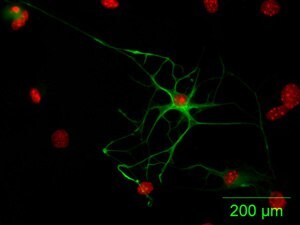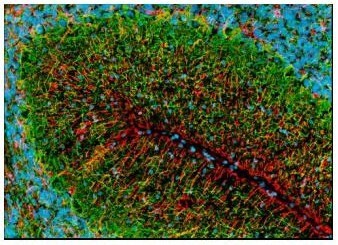NE1015
Anti-Glial Fibrillary Acidic Protein Cocktail Mouse mAb (SMI-22)
liquid, clone SMI-22, Calbiochem®
Synonim(y):
Anti-GFAP Cocktail
About This Item
Polecane produkty
pochodzenie biologiczne
mouse
Poziom jakości
forma przeciwciała
ascites fluid
rodzaj przeciwciała
primary antibodies
klon
SMI-22, monoclonal
Postać
liquid
zawiera
≤0.1% sodium azide as preservative
reaktywność gatunkowa
human, bovine, mouse, guinea pig, porcine, sheep, canine, rat, chicken
producent / nazwa handlowa
Calbiochem®
warunki przechowywania
OK to freeze
avoid repeated freeze/thaw cycles
izotyp
IgG2b
Warunki transportu
wet ice
temp. przechowywania
−20°C
docelowa modyfikacja potranslacyjna
unmodified
informacje o genach
human ... GFAP(2670)
Opis ogólny
Immunogen
Zastosowanie



ELISA (1:1000)
Frozen Sections (1:1000, see comments)
Immunoblotting (1:1000)
Immunocytochemistry (1:1000, see comments)
Paraffin Sections (1:1000, trypsin or heat pre-treatment required)
Ostrzeżenie
Postać fizyczna
Rekonstytucja
Komentarz do analizy
Astrocytes or cytoskeletal preparations
Inne uwagi
McLendon R.E., et al. 1986. J. Neuropathol. Exp. Neurol.45, 692.
Pegram, C.N., et al. 1985. Neurochem. Pathol.3, 119.
Informacje prawne
Nie możesz znaleźć właściwego produktu?
Wypróbuj nasz Narzędzie selektora produktów.
Kod klasy składowania
10 - Combustible liquids
Klasa zagrożenia wodnego (WGK)
WGK 1
Certyfikaty analizy (CoA)
Poszukaj Certyfikaty analizy (CoA), wpisując numer partii/serii produktów. Numery serii i partii można znaleźć na etykiecie produktu po słowach „seria” lub „partia”.
Masz już ten produkt?
Dokumenty związane z niedawno zakupionymi produktami zostały zamieszczone w Bibliotece dokumentów.
Nasz zespół naukowców ma doświadczenie we wszystkich obszarach badań, w tym w naukach przyrodniczych, materiałoznawstwie, syntezie chemicznej, chromatografii, analityce i wielu innych dziedzinach.
Skontaktuj się z zespołem ds. pomocy technicznej




